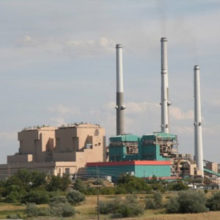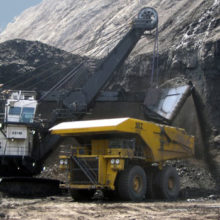The decline of Appalachia’s mining industry initiated conversations about diversifying the economies of coal-dependent communities and assisting displaced workers. As the downturn in the coal industry has affected the western United State in recent years, conversations are emerging in this region as well.
In an effort to revive the flagging coal industry, the incoming Trump Administration has promised to remove regulations on coal mining and coal-fired power generation.
Reducing regulations, however, is unlikely to succeed. The effort unfortunately also could divert needed attention away from western workers who already have lost their jobs and away from the communities struggling to adapt to new energy markets. A better approach would be to continue existing coal worker and community support and transition programs—and expand them West.
Energy Market Transitions
Coal production in the United States is largely a story about economic geography: Appalachian coal’s proximity to eastern manufacturing centers helped power a growing nation, only to be displaced as cheap western coal grew to dominate U.S. electricity generation markets.
Market forces rather than regulations drove long-term declines in Appalachia’s coal production: railroad deregulation lowered rail freight costs, below-market leasing spurred federal coal mining, and vastly larger and more productive surface coal mines made western coal cheaper to deliver to power plants across the U.S.
These forces were leveraged by the Carter Administration’s efforts to increase domestic energy production, including an effort to increase coal production to one billion tons annually and a congressional ban on new natural gas fired power plants.
In short, regulations and policy favorable to the western coal industry killed Appalachian coal.
Today, the “shale revolution” has created a surplus of natural gas which ultimately crashed natural gas prices and is now displacing western coal. This latest shift in energy markets signals a long-term decline for coal across the country.
Appalachia has struggled to help declining coal-dependent communities and displaced workers. Today coal job losses also are hitting across the West. Colorado lost 1,000 coal jobs from 2011 to 2016, Wyoming 800, and Utah 500.
A rebound in western coal is limited by the declining number of plants left to burn coal as older, less efficient coal-fired power plants are retired. New generation capacity instead is being added in renewables, primarily wind and solar, and through efficient combined-cycle natural gas plants.
The remaining U.S. fleet of coal-fired power plants also is being used less intensively because lower-cost fuels are called upon first to meet energy demands on any given day. Coal demand now is linked directly to volatile natural gas markets—meaning that coal demand will be both lower and more uncertain from year to year.
Shift Coal Transition Planning West
Faced with these shifting economic forces, the new Administration should continue coal worker and community support and transition programs in Appalachia—and move them West.
The ongoing energy transition will have little economic effect on most states, but at the local level where coal mines and power plants are located, the downturn in coal power will have acute economic and social impacts.
The Obama Administration initiated several programs to assist coal-dependent communities and displaced workers. These efforts leverage ongoing rural economic development and workforce training programs at the federal and state levels.
For example, the POWER Initiative proposed an additional $9 billion for economic and workforce development in Appalachia. These funds supplement the Appalachian Regional Commission that invests millions of dollars annually into businesses, people, and infrastructure across Appalachia to build leadership and economic opportunity. Trump should also push Congress to find funding for and pass legislation like the Coal Healthcare and Pensions Protection Act of 2015.
Recommitting to these programs, and expanding them nationally, will leverage the efforts of states and private foundations. Wyoming’s Governor Matt Mead, for example, recently announced an initiative to diversify the state’s economy, a goal that has eluded the coal- and energy-rich state for generations but is more important now than ever.
Montana aborted an energy-planning process framed around compliance with the Clean Power Plan, but might consider reviving a planning effort to consider economic development options. The state needs to address the pending closure of two units at the Colstrip power plant as well as growing uncertainty for several other coal-mining dependent communities.
Better policy direction from Washington, D.C. could help these states. The federal government also could follow the lead of energy-producing states and establish a natural resources permanent trust to stabilize volatile royalty revenue from federal lands and to make long-term investments in energy-producing states and communities. These and similar actions would support workers and communities through the ongoing energy transition.


